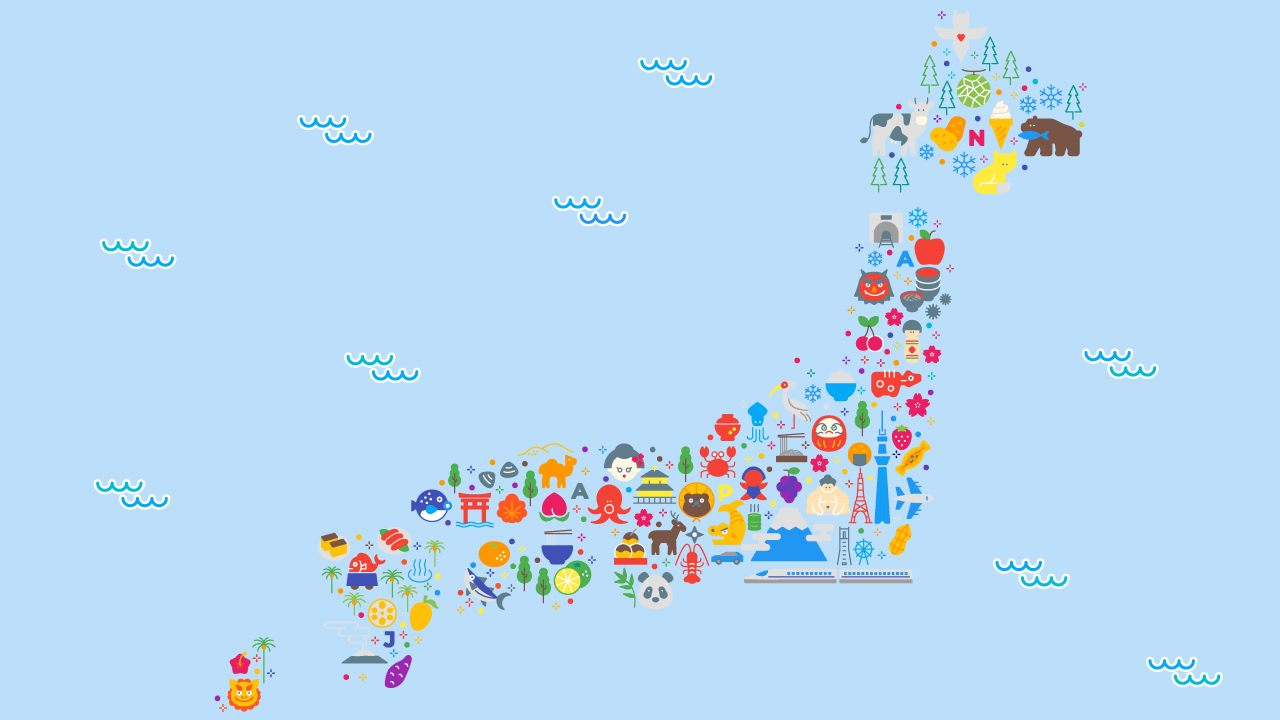
The Prefectures of Japan
Guideto Japan
Culture History- English
- 日本語
- 简体字
- 繁體字
- Français
- Español
- العربية
- Русский
Japan has 47 prefectures. These units rank immediately below the national government, and their governments handle a range of administrative and juridical services for their residents. The prefectures are run by governors and legislators chosen in popular elections, operate their own police forces, maintain networks of prefectural roads, and carry out various other urban and rural planning functions.
In Japanese, four separate terms describe them: to (the “metropolis” of Tokyo), dō (a larger “territory,” used only for Hokkaidō), fu (the “urban prefectures” of Kyoto and Osaka), and ken (used for the other 43). They were created following the Meiji restoration of 1868, often with borders matching the provinces that existed up through the Edo period (1603–1868).
The standard order used in Japanese to list the prefectures runs from north to south, more or less, rather than using kana order. This is the order used in the list below. The list is further divided into chihō, or the “regions” of Japan. Hokkaidō, the largest prefecture by far, is frequently treated as its own separate region, and has a number of subprefectural bureaus in place to handle more local affairs. Other names describing the regions of Japan include Kinki, sometimes used in place of Kansai; Kōshin’etsu, covering Niigata, Nagano, and Yamanashi in the Chūbu region; Tōkai, generally held to include Shizuoka, Aichi, Gifu, and Mie prefectures; and Hokuriku, the Chūbu region prefectures located along the Sea of Japan coast.
We hope you enjoy exploring Japan’s 47 prefectures via the links below!
Hokkaidō and Tōhoku
- Hokkaidō Prefecture
- Aomori Prefecture
- Iwate Prefecture
- Miyagi Prefecture
- Akita Prefecture
- Yamagata Prefecture
- Fukushima Prefecture
Kantō
- Ibaraki Prefecture
- Tochigi Prefecture
- Gunma Prefecture
- Saitama Prefecture
- Chiba Prefecture
- Tokyo Metropolis
- Kanagawa Prefecture
Chūbu
- Niigata Prefecture
- Toyama Prefecture
- Ishikawa Prefecture
- Fukui Prefecture
- Yamanashi Prefecture
- Nagano Prefecture
- Gifu Prefecture
- Shizuoka Prefecture
- Aichi Prefecture
Kansai (Kinki)
- Mie Prefecture
- Shiga Prefecture
- Kyoto Prefecture
- Osaka Prefecture
- Hyōgo Prefecture
- Nara Prefecture
- Wakayama Prefecture
Chūgoku
Shikoku
Kyūshū and Okinawa
- Fukuoka Prefecture
- Saga Prefecture
- Nagasaki Prefecture
- Kumamoto Prefecture
- Ōita Prefecture
- Miyazaki Prefecture
- Kagoshima Prefecture
- Okinawa Prefecture
(Originally published in English. Banner image © Pixta.)